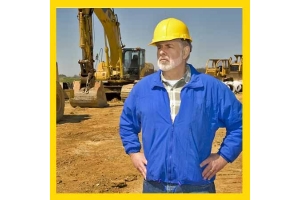Currency
June 28, 2022

Have you ever been in an environment that was so hot that you felt like basic functioning would take tremendous effort? Extreme heat can envelop you, enclosing you in an uncomfortable case that impacts your ability to move, to breathe and even to see if you are in it long enough.
This is a scenario that millions of workers must face when they go to work in the hot summer months and the heat isn’t cooling down. In fact, research shows that the temperatures in the United States will only continue to go up over the next decade after reaching a historic high in 2021.
According to the NOAA’s National Centers for Environmental Information, 2021 had the warmest meteorological summer (June-August) on record with an average temperature of 74.01 degrees Fahrenheit. This record had been previously set for 85 years by the year 1936 when the average temperature of the summer was 74.00 degrees Fahrenheit.
The 1930s are known for their scorching temperatures as dust storms blew across the Great Plains and many states recorded some of their highest temperatures. Many studies have since attributed the extreme heat of the 1930s to the naturally occurring drought which triggered a warm sea surface in the North Atlantic. The heat was only made worse by the bare, over-plowed soil of the Great Plains.

Research shows that land management practices had lessened the possibility of another 1930s-like decade of extreme heat, especially in the “Corn Belt,” or Central United States where fertile lands produce 10 billion bushels of corn each year. The region has since seen lower temperatures and rainfall has increased nearly 35 percent.3
Despite the changes of regional weather, the country has now seen a summer just a shade hotter than that desperate Dust Bowl summer of ‘36. In fact, five states had their hottest summers on record, these include California, Idaho, Nevada, Oregon and Utah. Twenty-one other states had summer temperatures that ranked in the top ten for their state.
The year 2021 saw one of the most horrifically brutal heat waves across Washington and Oregon. Temps soared to a blistering 108 degrees Fahrenheit in Seattle and 116 degrees in Portland on June 28. Early estimates showed that hundreds of people may have died as a result of the extreme temperatures.
These extreme weather temperatures are not going away any time soon, according to meteorologists. Researchers at Severe Weather Europe predict that North America will see a hotter-than-normal summer in 2022, especially in the southern states as it is anticipated they will see a drier season causing concern for severe droughts.
While some researchers are predicting a more rain-filled summer than normal, the temperatures will continue to heat up across the country causing serious concern for employees who spend most of their time outside.
Some of the most important occupations involve outdoor work. From the agriculture industry to construction industry, millions of employees must brave the impact of weather while on the job. These outdoor workers tend to be the most vulnerable to the adverse health effects of extreme temperatures.
This is a scenario that millions of workers must face when they go to work in the hot summer months and the heat isn’t cooling down. In fact, research shows that the temperatures in the United States will only continue to go up over the next decade after reaching a historic high in 2021.
It’s Heating Up
According to the NOAA’s National Centers for Environmental Information, 2021 had the warmest meteorological summer (June-August) on record with an average temperature of 74.01 degrees Fahrenheit. This record had been previously set for 85 years by the year 1936 when the average temperature of the summer was 74.00 degrees Fahrenheit.
The 1930s are known for their scorching temperatures as dust storms blew across the Great Plains and many states recorded some of their highest temperatures. Many studies have since attributed the extreme heat of the 1930s to the naturally occurring drought which triggered a warm sea surface in the North Atlantic. The heat was only made worse by the bare, over-plowed soil of the Great Plains.

Research shows that land management practices had lessened the possibility of another 1930s-like decade of extreme heat, especially in the “Corn Belt,” or Central United States where fertile lands produce 10 billion bushels of corn each year. The region has since seen lower temperatures and rainfall has increased nearly 35 percent.3
Despite the changes of regional weather, the country has now seen a summer just a shade hotter than that desperate Dust Bowl summer of ‘36. In fact, five states had their hottest summers on record, these include California, Idaho, Nevada, Oregon and Utah. Twenty-one other states had summer temperatures that ranked in the top ten for their state.
The year 2021 saw one of the most horrifically brutal heat waves across Washington and Oregon. Temps soared to a blistering 108 degrees Fahrenheit in Seattle and 116 degrees in Portland on June 28. Early estimates showed that hundreds of people may have died as a result of the extreme temperatures.
These extreme weather temperatures are not going away any time soon, according to meteorologists. Researchers at Severe Weather Europe predict that North America will see a hotter-than-normal summer in 2022, especially in the southern states as it is anticipated they will see a drier season causing concern for severe droughts.
While some researchers are predicting a more rain-filled summer than normal, the temperatures will continue to heat up across the country causing serious concern for employees who spend most of their time outside.
Vulnerable Outdoor Workers
Some of the most important occupations involve outdoor work. From the agriculture industry to construction industry, millions of employees must brave the impact of weather while on the job. These outdoor workers tend to be the most vulnerable to the adverse health effects of extreme temperatures.









